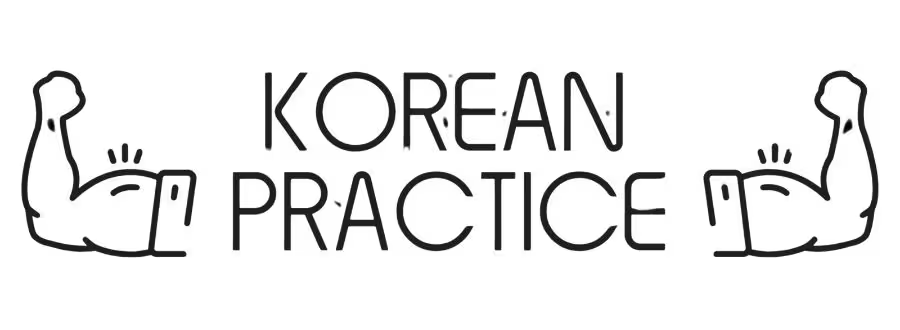Table of Contents
Introduction to Learning Korean
Learning Korean can be exciting and rewarding, whether you’re a beginner or an advanced learner. If you’ve been wondering how to learn Korean easily, this guide will help you step by step.
We will cover everything you need to know about learning Korean, including essential grammar, vocabulary, listening and reading practice, and the best way to learn Korean effectively.
Why Learn Korean?
K-Pop & K-Dramas – Enjoy your favorite Korean content without subtitles.
Travel to Korea – Communicate easily with locals.
Career Opportunities – Korean language skills can boost your resume.
Cultural Understanding – Dive deeper into Korea’s rich traditions and history.
- Enhanced Cognitive Function – Studies show that learning a foreign language, like Korean, can lead to increased cognitive abilities and structural changes in the brain.
How to Start Learning Korean
Learn Hangul (Korean Alphabet)
Hangul is the foundation of the Korean language. Fortunately, it is one of the easiest alphabets to learn! If you want to know how to learn Korean language quickly, mastering Hangul should be your first step.
Tip: Learn Hangul in just a few hours with simple memorization techniques.
Click the image below to start the free Korean course. This course avoids heavy theory and focuses on practical, immediately usable Korean.
Basic Korean Phrases for Beginners
Start with common greetings and expressions:
“Hello” – 안녕하세요 (annyeonghaseyo)
“Thank you” – 감사합니다 (gamsahamnida)
“Excuse me” – 실례합니다 (sillyehamnida)
Note: As you learn, remember that while these phrases are useful, they are just a starting point. Don’t get bogged down memorizing ONLY these. Focus on understanding Korean sentence structure for a more impactful learning experience.
Example
Original Korean Sentence
안녕하세요.
Pronunciation Guide
안녕하세요 (an-nyeong-ha-se-yo).
Meaning and Context
안녕하 (to be peace) 세요 (I’m asking you politely).
English Translation
Hello.
Literal Translation
Are you in peace?
Example
Original Korean Sentence
감사합니다.
Pronunciation Guide
감사합니다 (gam-sa-ham-ni-da).
Meaning and Context
감사하 (to be thankful) ㅂ니다 (I’m telling you in a formal way).
Pronunciation Patterns for Conjugations
⊳ 감사하 + ㅂ니다 = 감사합니다. When rapidly pronounced, ‘하’ and ‘ㅂ’ naturally combine to form ‘합’.
English Translation
Thank you.
Literal Translation
Thank (you).
Example
Original Korean Sentence
실례합니다.
Pronunciation Guide
실례합니다 (sil-rye-ham-ni-da).
Meaning and Context
실례하 (to be impolite) ㅂ니다 (I’m telling you in a formal way).
Pronunciation Patterns for Conjugations
⊳ 실례하 + ㅂ니다 = 실례합니다. When rapidly pronounced, ‘하’ and ‘ㅂ’ naturally combine to form ‘합’.
English Translation
Excuse me.
Literal Translation
I am doing impoliteness.
Korean Pronunciation Basics
Understand the difference between tense and aspirated consonants and practice speaking Korean aloud for fluency.
Note: While understanding the basics of Korean pronunciation is important, don’t get bogged down in perfecting it from the very beginning. Spending too much time on pronunciation at the start can be discouraging and overwhelming. A better approach is to learn the fundamentals of pronunciation lightly and then gradually refine your pronunciation as you continue studying the language and practicing speaking. Focus on overall comprehension and building vocabulary first, and your pronunciation will naturally improve over time.

Want to learn Korean in a simple and structured way, just like this? My courses break down grammar step by step, making Korean easy to understand. Plus, you can try free sample lessons. Ready to start?
Korean Grammar Essentials
One of the biggest challenges when you learn Korean language is understanding its sentence structure, which is different from English (Subject-Object-Verb). If you’re looking for the best way to learn Korean, grasping these basics is key:
Basic Sentence Structure – 저는 한국어를 배워요 (I learn Korean)
Verb Conjugation – Korean verbs change based on tense and politeness level.
Particles – Subject (이/가), Object (을/를), Topic (은/는)
Note: Don’t get stuck memorizing endless grammar rules! One of the worst habits when learning Korean is overloading yourself with grammar early on. Instead, focus on how to learn Korean naturally through immersion.
Instead of solely relying on grammar rules, our course is designed to help you understand Korean’s fundamental structure *naturally* through stories. By reading and engaging with compelling narratives, you’ll absorb the sentence structure, vocabulary, and even grammar points organically. Learn through immersion!
So, focus on enjoying the stories, and only learn the specific grammar points you need as you encounter them. This approach will be much more effective and enjoyable in the long run!
Example
Original Korean Sentence
저는 한국어를 배워요.
Pronunciation Guide
저는 (jeo-neun) 한구거를 (han-gu-geo-reul) 배워요 (bae-wo-yo).
Meaning and Context
저 (I; in a humble way) 는 (my topic is me) 한국어 (Korean) 를 (my object is Korean) 배우 (to learn) 어요 (I’m telling you polite and friendly).
Pronunciation Patterns for Conjugations
⊳ 우 + 어 = 워. When rapidly pronounced, ‘우’ and ‘어’ naturally combine to form ‘워’.
English Translation
I learn Korean.
- Click the image below to start your Korean story course, perfect for absolute beginners! This course is designed for those completely new to Korean and strips away unnecessary grammar. It focuses on stories built with basic sentence structures, so you can quickly grasp how Korean works after reading through the stories.
Building Your Korean Vocabulary
Common Words & Expressions
- Greetings and everyday phrases
- Essential verbs and adjectives
- Numbers, days, and time expressions
Thematic Vocabulary Lists
- Travel Korean
- Shopping Korean
- Food & Restaurant Korean
- Note: To effectively learn Korean, building vocabulary is essential. However, just memorizing words in isolation can be tough and not the best way to learn Korean. Instead, I highly recommend diving into fun Korean stories! It’s a much more natural and less stressful way to pick up new words and learn Korean language.
- Plus, we’ll use speed reading to help those words stick in your memory, showing you how to learn Korean easily. I’ve got a bunch of stories in our course designed to help you learn Korean, so choose one that fits your level and enjoy! I also have a free vocab course designed to make learning Korean easy and enjoyable. Let’s build your Korean skills together!
- Click the image below to start the free Korean course. This vocabulary course is designed to help you understand how Korean works by breaking down sentences.
Korean Practice – Listening, Reading, Writing & Speaking
Listening Practice
- Want to learn Korean effectively through listening? You’ve probably heard the standard advice: Watch K-Dramas & K-Pop lyrics with subtitles, listen to Korean podcasts & audiobooks, or try dictation practice – listening and writing what you hear. While these are great resources on how to learn Korean language, and a best way to learn Korean for some, they aren’t always the best starting point, especially if you are thinking how to learn Korean easily.
- I want to give some listening practice advice to my learn Korean students. Often, people suggest things like watching K-Dramas and K-Pop with subtitles, or listening to Korean podcasts and audiobooks. They might also recommend dictation exercises – listening and writing what you hear. But honestly, those methods aren’t very realistic for true beginners hoping to learn Korean.
- Those techniques are really designed for learners who already have some Korean under their belt, not for absolute beginners trying to learn Korean. I can almost guarantee that 100% of Korean language newcomers would find those methods too difficult and frustrating, and they would give up.
- I recommend enjoying those things once you feel more confident in your listening abilities. For beginners wanting to learn Korean, it’s far better to practice listening with patterns built on basic Korean sentence structures. Our students tell us our listening course is very easy and fun. We currently have an intermediate listening course, but we’re working on a beginner course that will be released soon. Please stay tuned for a much ‘how to learn Korean easily’ program!
Reading Practice
- Read short Korean stories designed for learners, not for Koreans. Explore beginner-friendly Korean newspapers and webtoons to enhance your understanding. This reading practice is a crucial step in how to learn Korean easily.
- This isn’t just about improving your reading comprehension. We’re taking it to the next level! We focus on speed reading, rapidly rereading the material. This method significantly boosts your listening, speaking, and writing skills. Think of it as the best way to learn Korean comprehensively.
- Our story-based courses are specifically designed to teach you how to speed read effectively. Forget ineffective grammar lessons. Experience special training that will transform the way you learn Korean. You will witness a miracle.
Writing Practice
- Keep a Korean journal (daily entries)
- Practice writing simple sentences and expand gradually
- Note: So you want to practice Korean by keeping a daily journal. Here’s the thing: while journaling *can* be helpful, I actually think it’s not always the *best* way to spend your time, *especially* if your main goal is to be able to speak and understand Korean conversationally and enjoy things like K-dramas and K-pop.
Here’s why:
Focus vs. Goal: Journaling is slow and deliberate. You have to really think about each sentence. But understanding speech and participating in conversations requires quick thinking and fast comprehension. This is crucial when you learn Korean.
Different Skills: Writing mainly helps with *writing*. It *might* help with grammar overall, but it doesn’t directly improve your listening comprehension or speaking speed. So you need to consider what skills you prioritize when you learn Korean easily.
That being said, if you *still* want to try journaling, especially if you enjoy writing, we can start with very simple sentences and gradually build up complexity. It might also be useful if you know you need to write in Korean (like for a job or school).
So, before we start, what are your primary goals for learning Korean? And how much time do you have to dedicate to it each day? Knowing this will help me tailor the journaling practice (if we do it) to be as effective as possible.
Speaking Practice
- Shadow native speakers (repeat after them)
- Find a language partner or join a Korean-speaking community
- Note: When learners think about speaking practice, they usually imagine having someone to talk *with*. They think they need a partner to practice Korean effectively.
- But honestly, a supportive environment like that is rare for most Korean learners. And even *if* you find someone – a Korean friend, a teacher, or another Korean speaker – it’s often not as helpful as you might expect. The truth is, your practice partner is still a person. They might be busy, or just not in the mood. You might even get discouraged if they seem impatient, and then you’ll be less motivated to practice. So, while talking to someone directly *can* be good, it’s not always the *best* way.
- I *strongly* recommend speed reading Korean stories. Speed reading trains your brain to generate Korean *quickly*, just like you need to when speaking. After speed reading, *then* try speaking with a native speaker, just to test things out. You’ll be surprised at how well you can speak! Whether you’re working on listening, speaking, reading, or writing, always remember: when you learn Korean, you’re training your brain! Focusing on the best way to learn Korean will yield great results.
FAQs About Learning Korean
Q: How long does it take to learn Korean?
A: It depends on consistency, but basic fluency in learn Korean can take 6-12 months with regular practice. Many wonder about the best way to learn Korean for fast results.
However, the reality is that many learners waste valuable time on less effective methods.
A common pitfall is overemphasizing grammar rules early on, believing a strong grammatical foundation is essential for speaking. Learners can also get bogged down trying to memorize extensive vocabulary lists, only to forget them later. And while pronunciation is crucial, obsessing over perfect pronunciation from the start can be demotivating and time-consuming. These inefficiencies can significantly slow progress.
My recommendation, if you’re wondering how to learn Korean easily, is to prioritize learning the Korean alphabet and reading system quickly. Then, dive straight into reading simple Korean story examples. By focusing on speed reading, you’ll immerse yourself in Korean sentence structure and begin to develop conversational skills much faster. Through reading, you’ll naturally acquire grammar, vocabulary, and pronunciation in a more intuitive and engaging way. Don’t overcomplicate the process. Focus on simplicity and efficiency for faster and greater results when you learn Korean.
Q: Is Korean hard to learn?
A: Korean grammar is different from English, but Hangul is easy to master.
Adding to that, the difficulty of learning Korean really depends on your native language. Korean itself isn’t inherently a difficult language. English and Korean differ significantly in word order, pronunciation, structure, and grammar, making it challenging for English speakers. On the other hand, Japanese and Korean share many similarities in word order, pronunciation, structure, and grammar (though the writing systems differ). This makes Korean much easier for Japanese speakers to learn Korean.
If Korean is similar to your native language, you can quickly master it by studying some different grammar or vocabulary. However, Korean is an isolated language. In other words, there is no language on Earth that has the same system as Korean. When studying this kind of language, grammar and vocabulary should not be prioritized. What should be prioritized is training the brain to quickly and naturally accept this heterogeneous foreign language, , a crucial aspect of how to learn Korean language effectively.
Q: How can I practice Korean daily?
A: Use Korean in daily life, listen to Korean media, and join online communities. To learn Korean, consistent practice is key.
Learning a new language, like Korean, is very similar to learning a new sport. The challenges you face, the progress you make, the plateaus you hit… all these mirror the process of mastering a physical skill.
Therefore, when you’re thinking about how to learn Korean more effectively and quickly, consider how you would approach learning a new sport. When you hit a slump in your Korean studies, think about how athletes deal with slumps and see if you can draw parallels.
Treat your Korean practice like a sport. Do it daily. If possible, aim for not just once a day, but three times – morning, noon, and night. And just like with exercise, *move*! Move your brain – think actively in Korean. Move your mouth – practice speaking aloud. Move your ears – actively listen and try to distinguish sounds.
Furthermore, repeat the same actions, just like in sports. Keep repeating the same phrases, the same grammar points, the same pronunciation exercises until you are bored. That’s when it starts to sink in. Repetition is key to building muscle memory – both physical *and* linguistic!”
Conclusion: Let Stories Teach You Korean, Not Grammar
Incorporating storytelling into your Korean learning process allows you to bypass the confusion of grammar-focused learning. By reading, listening, and engaging with stories, you’re training your brain to understand Korean naturally and intuitively. And over time, you’ll become fluent without needing to memorize every grammar rule.
Sign up for my newsletter and get
📖 Korean short stories
🎧 Listening practice with audio
❓ Vocabulary and grammar quizzes
🎁 Free courses
📝 Blog updates
– all delivered straight to your inbox!










